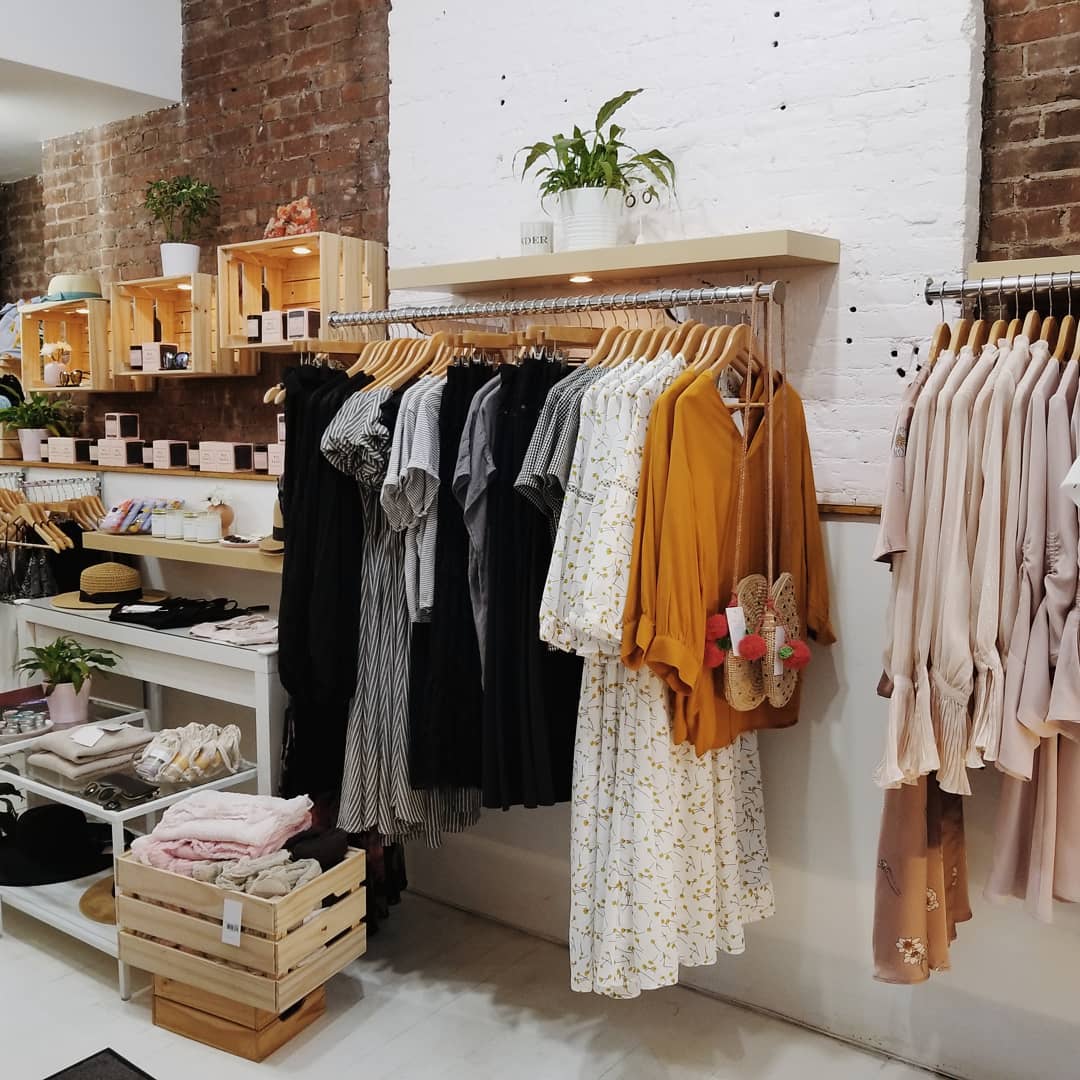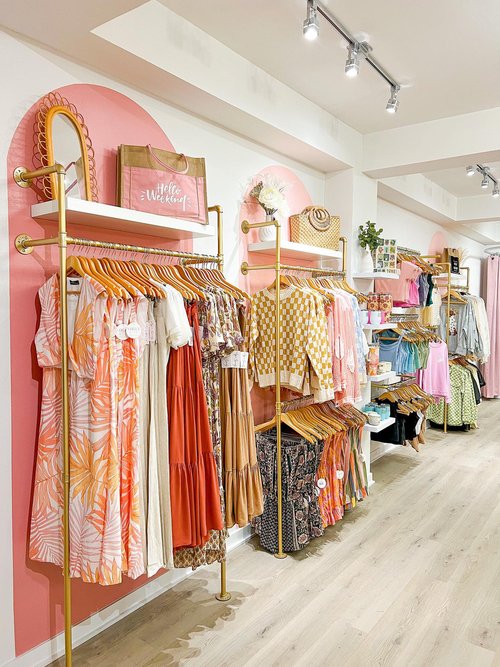Exploring the Development and Effect of Clothing on Modern Fashion Trends
The development of apparel has actually dramatically influenced contemporary fashion fads, merging historical criteria with innovative technologies. Legendary figures like Coco Chanel and Yves Saint Laurent reinvented the style market by presenting concepts that prioritize convenience and access, which proceed to reverberate today.
Historical Fashion Influencers
In the tapestry of style background, specific numbers have actually left an enduring mark, shaping the fads and styles that specify entire eras. Coco Chanel, an innovative developer, redefined females's fashion by presenting comfortable, classy clothes that left from limiting corsets. Her renowned Chanel suit and little black gown have actually ended up being classic staples in closets worldwide. Similarly, Christian Dior's post-war "Face-lift" in 1947, with its event of feminineness through full skirts and cinched midsections, marked a return to luxury and has actually remained to affect developers.
Elsa Schiaparelli is one more crucial figure, renowned for her avant-garde styles that included surrealist art, collaborating with Salvador Dalí to create wayward pieces that tested conventional aesthetics. Her ingenious usage of shade and bold patterns resounds in contemporary fashion. Yves Saint Laurent, meanwhile, equalized high style with prêt-à-porter collections, bringing runway designs to the masses and establishing a precedent for contemporary ready-to-wear lines.
These enthusiasts, amongst others, not just changed style in their times yet also set sustaining fads that resonate in today's fashion business, providing a foundation whereupon modern-day designers continue to construct and introduce. Their legacies underscore the significance of creative thinking and bold in vogue's ever-evolving story.
Technological Advancements in vogue
In the middle of the vibrant landscape of the apparel industry, technological developments stand at the leading edge of advancement, improving just how designers produce and customers engage with fashion. The assimilation of 3D printing has revolutionized design procedures, making it possible for developers to trying out intricate frameworks and lasting products that were previously inconceivable. This modern technology promotes rapid prototyping, decreasing waste and quickening manufacturing times.

Smart textiles, embedding innovation into materials, are also transforming the sector. Advancements like temperature-regulating and self-cleaning fabrics supply improved functionality and convenience. Wearable modern technology, incorporating functions like fitness tracking and communication, includes a new dimension to style, merging appearances with practicality.
Social Changes and Design
As technological advancements continue to improve the fashion market, cultural shifts are just as significant, redefining style and customer choices. In the last few years, the surge of social media sites systems has actually accelerated the dissemination of worldwide fashion fads, permitting diverse cultural influences to exist together and converge. This digital interconnectivity has actually facilitated the rapid exchange of concepts, leading to an extra comprehensive and diverse interpretation of design that reflects the diverse nature of modern-day society.
Social awareness and appreciation have triggered designers to attract ideas from a broader range of historic and ethnic contexts, integrating standard concepts with contemporary visual appeals. This blend has resulted in fashion that resonates with a larger target market, promoting a feeling of identification and belonging throughout different demographics. Additionally, the boosting need for personalization has driven brand names to offer personalized alternatives, allowing customers to express originality while mirroring their social heritage.
In addition, changing social values have actually impacted style, with inclusivity and variety coming to be central styles. The industry has begun to this content welcome designs and influencers of numerous body kinds, ethnic backgrounds, and sex identities, challenging conventional appeal Discover More criteria. This improvement emphasizes the power of social shifts in forming the future of style, as style comes to be a more authentic expression of personal and cumulative identification.
Sustainability and Modern Style
While the fashion sector continues to evolve, the imperative for sustainability has actually come to be progressively urgent, affecting modern-day style techniques. The surge of sluggish fashion, which emphasizes top quality over quantity, motivates consumers to spend in timeless items rather than short-term patterns.
Furthermore, modern-day layout is characterized by its advancement in lessening waste and promoting circularity. This method not only reduces ecological impact however likewise improves the social responsibility of fashion homes.

Future Trends in Style

Sustainability will certainly remain to be a driving force in shaping future fashion trends. The market is increasingly taking on green products and moral manufacturing approaches, reacting to an expanding customer need for liable techniques. Advancements such as bio-fabricated products and closed-loop recycling systems are set to redefine exactly how clothing is created and eaten, lowering environmental effect while preserving design and quality.
Social shifts, consisting of navigate here the increase of inclusivity and variety, will likewise play a pivotal duty. As culture comes to be a lot more knowledgeable about social concerns, fashion is anticipated to come to be a platform for expression and adjustment. Developers will likely concentrate on creating collections that mirror a broader series of identities and experiences, championing representation and access.
Verdict
The advancement of clothing significantly affects modern style patterns, where historical influences merge with contemporary layouts. Secret numbers like Coco Chanel and Yves Saint Laurent have redefined design, while technological innovations such as 3D printing and smart fabrics expand innovative possibilities. Cultural changes towards inclusivity and sustainability force brands to embrace ethical techniques and embrace diversity. This ongoing advancement emphasizes style's role as a mirror to social values and technical development, suggesting a future rich with technology and inclusivity.
The advancement of apparel has actually significantly affected modern-day style patterns, merging historic criteria with advanced innovations.In the middle of the vibrant landscape of the fashion industry, technological improvements stand at the center of development, reshaping exactly how designers develop and consumers involve with style.While the style sector continues to evolve, the essential for sustainability has ended up being increasingly urgent, affecting contemporary style practices. As sustainability comes to be embedded in contemporary layout, it leads the method for an extra accountable and mindful fashion sector.
The development of garments significantly affects modern style patterns, where historic influences combine with contemporary layouts.